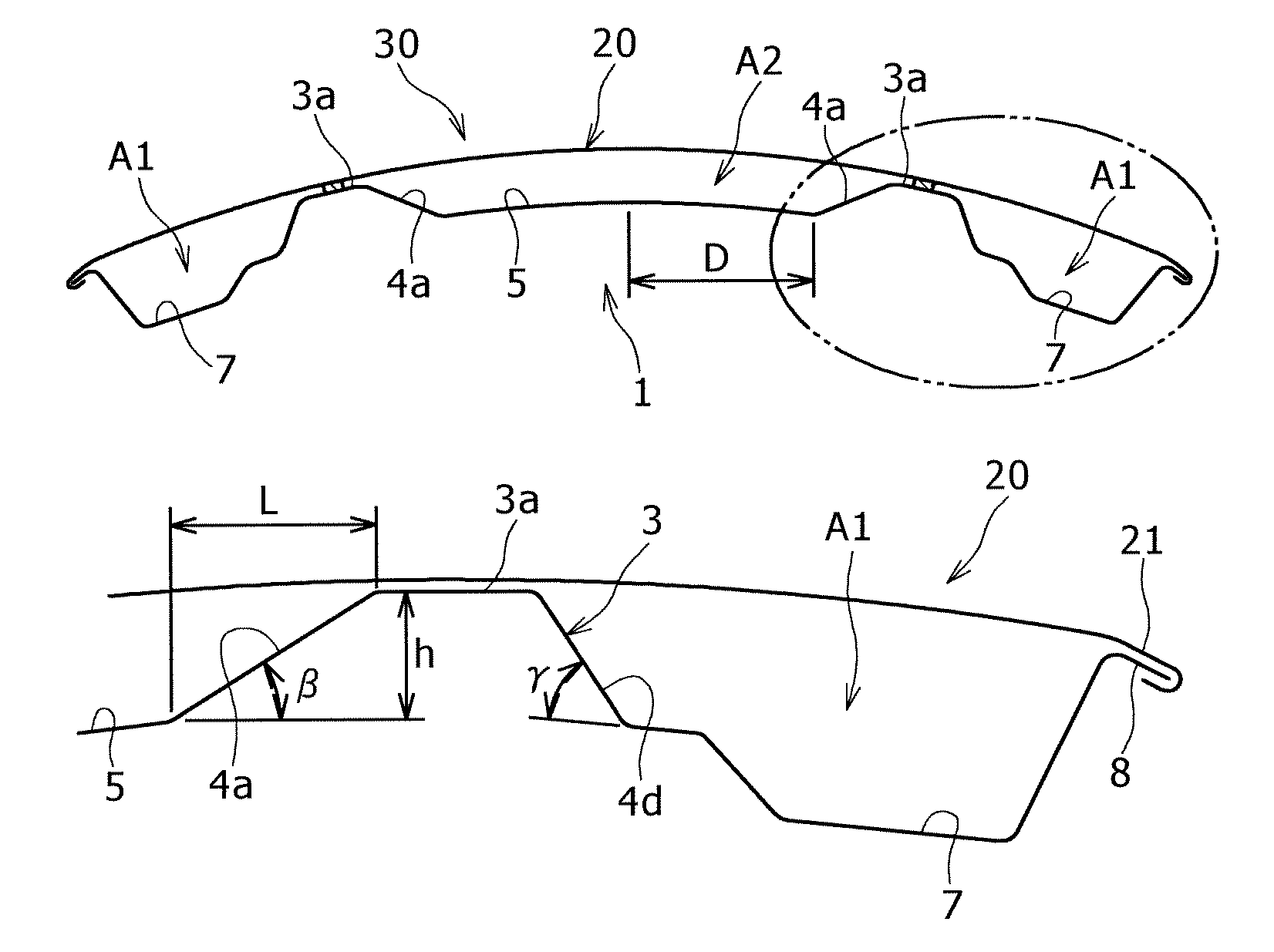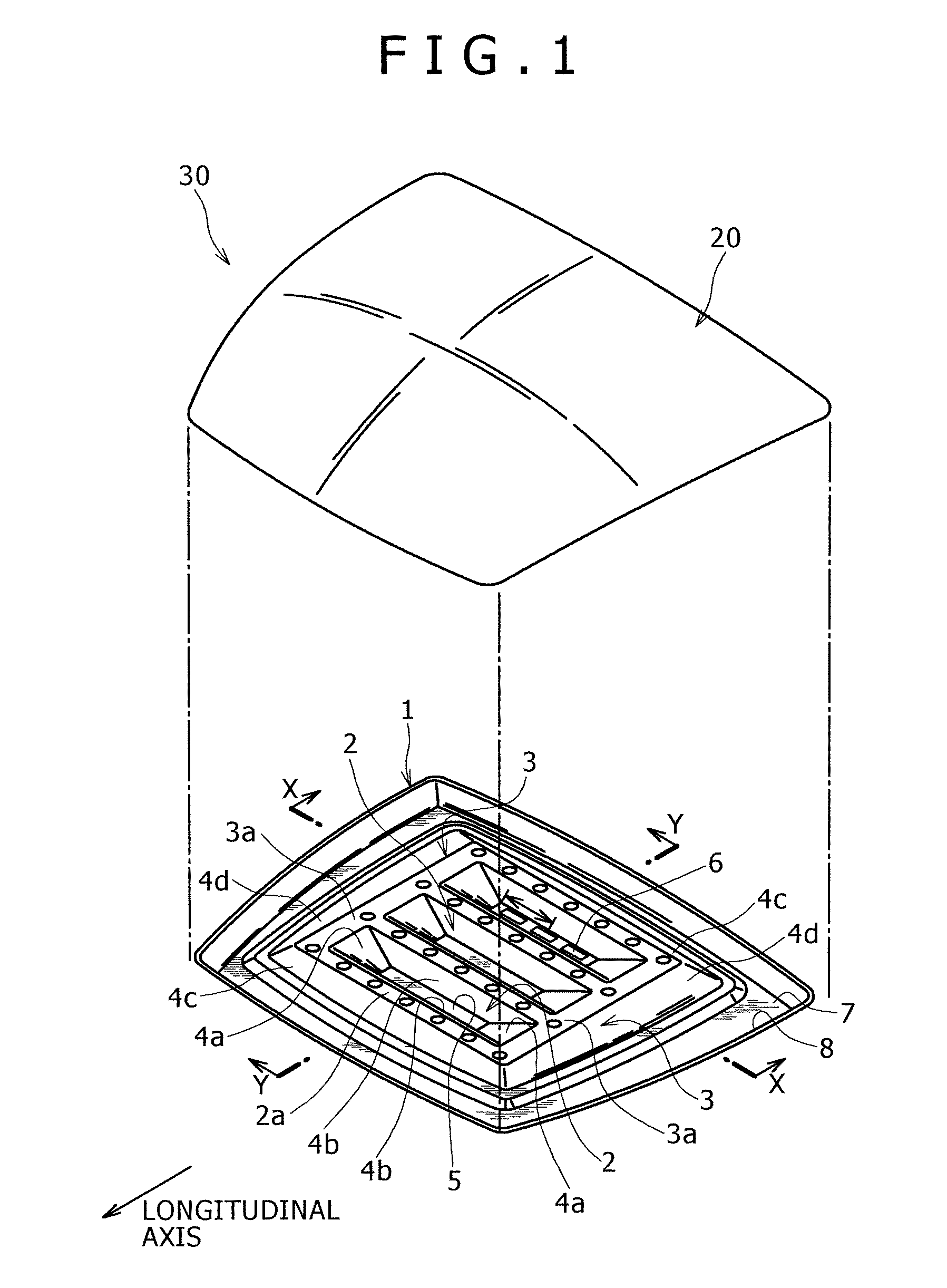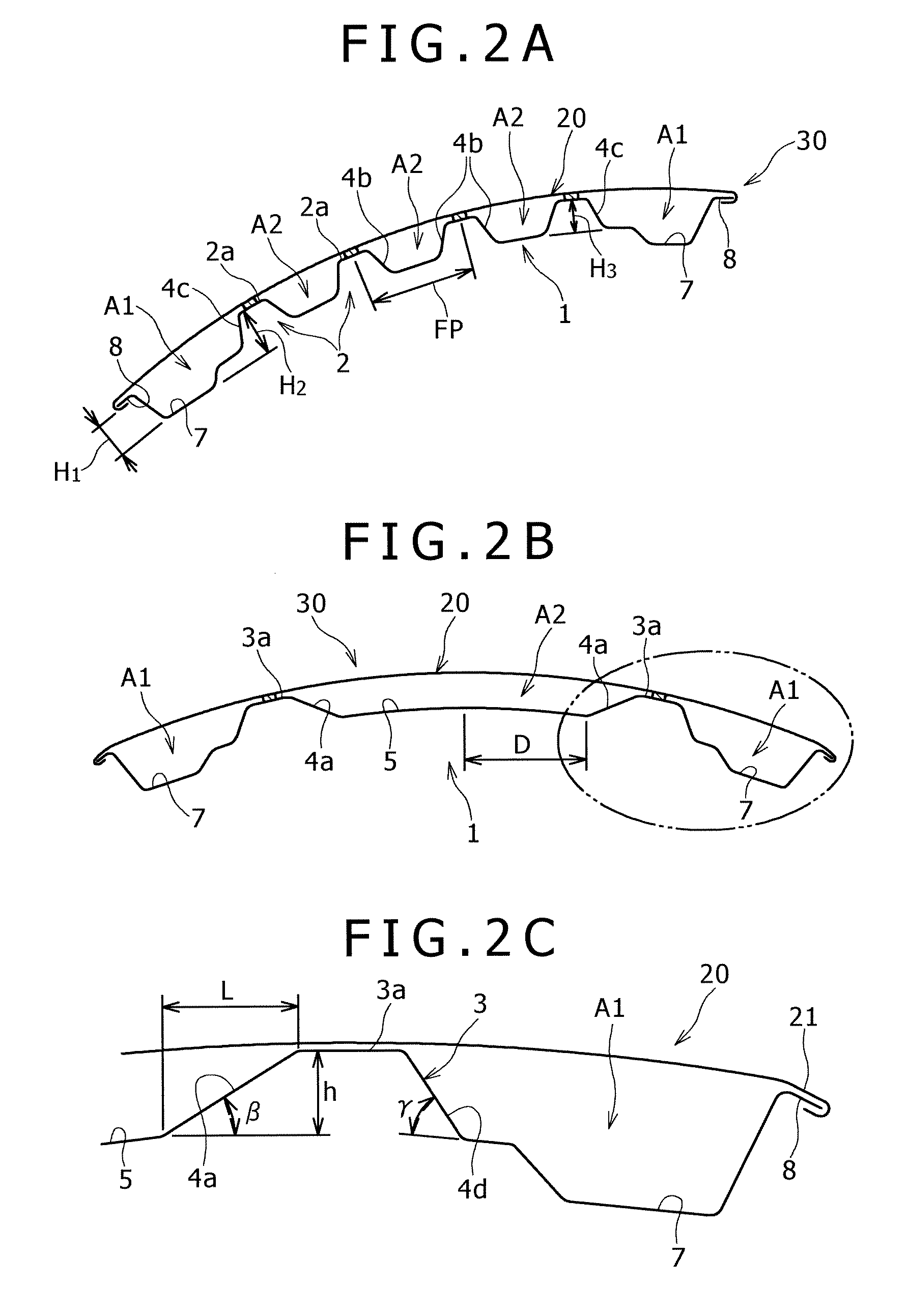Automotive engine hood
a technology for automobile engines and hoods, applied in the direction of roofs, pedestrian/occupant safety arrangements, vehicular safety arrangements, etc., can solve the problems of insufficient hic, insufficient pedestrian protection performance of most automotive engine hoods made of materials, and inability to exercise pedestrian protection, etc., to achieve excellent pedestrian protection performance, reduce secondary impact acceleration, and increase the amount of energy absorbed by primary impa
- Summary
- Abstract
- Description
- Claims
- Application Information
AI Technical Summary
Benefits of technology
Problems solved by technology
Method used
Image
Examples
first embodiment
[0059]Referring to FIG. 1, an automotive engine hood 30 is a first embodiment according to the present invention is formed by joining together an outer panel 20 and an inner panel 1. Spaces A1 and A2 are formed between the outer panel 20 and the inner panel 1 as shown in FIG. 2A.
[0060]Outer Panel
[0061]As shown in FIG. 1, the outer panel 20 is formed by bending a lightweight, high-tension metal sheet in a plane or a desired curved shape. Preferably, the material of the metal sheet is a steel or an aluminum alloy of the 3000 system, the 5000 system, the 6000 system or the 7000 system. A preferable thickness of the outer panel 20 is, for example, 1.1 mm or below when the outer panel 20 is formed by processing a steel sheet or 1.5 mm or below when the outer panel 20 is formed by processing an aluminum alloy sheet. The outer panel 20 may be a resin panel or a carbon fiber reinforced resin panel. Respective edge parts of the outer panel 20 and the inner panel 1 by hemming work, bonding or...
second embodiment
[0089]An automotive engine hood 30 in the second embodiment according to the present invention will be described. FIGS. 7A and 7B are a perspective view and a typical sectional view, respectively, of an inner panel 11 included in the automotive engine hood 30 in the second embodiment, and FIGS. 8A and 8B are perspective views of examples of connecting beads for the inner panel 11 shown in FIG. 7A.
[0090]The inner panel 11 of the automotive engine hood 30 in the second embodiment shown in FIG. 7A is provided with longitudinal beads 12 extending substantially parallel to the longitudinal axis of the vehicle. The longitudinal beads 12 are substantially the same as the transverse beads 2 and are different only in the direction in which the longitudinal beads 12 are extended. In FIGS. 7A, 7B, 8a and 8B, parts like or corresponding to those shown in FIGS. 1 to 6 are designated by the same reference characters and the description thereof will be omitted.
[0091]Referring to FIGS. 7A and 7B, t...
PUM
 Login to View More
Login to View More Abstract
Description
Claims
Application Information
 Login to View More
Login to View More - R&D
- Intellectual Property
- Life Sciences
- Materials
- Tech Scout
- Unparalleled Data Quality
- Higher Quality Content
- 60% Fewer Hallucinations
Browse by: Latest US Patents, China's latest patents, Technical Efficacy Thesaurus, Application Domain, Technology Topic, Popular Technical Reports.
© 2025 PatSnap. All rights reserved.Legal|Privacy policy|Modern Slavery Act Transparency Statement|Sitemap|About US| Contact US: help@patsnap.com



